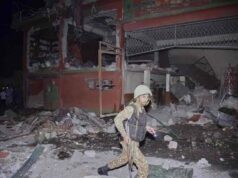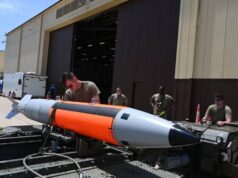There is a reason India turned to Armed Forces Medical Services when it came to coronavirus
Armed Forces Medical Services is the backbone of India’s defence. Other than AIIMS, no state-run medical facility can match what Indian military has managed in fight against coronavirus.

A view of the quarantine facility, which has been set up by the Army in Manesar |
When India needed its first quarantine facility for evacuees from Wuhan escaping the novel coronavirus pandemic the country turned, once again, towards its armed forces. But unlike earlier exigencies which involved militancy, communal strife, floods, other natural or man-made disasters, this time India faced a completely different threat. This time around, it wasn’t the local military formation that was tasked to provide aid or clean up the mess created by others. The fallback option wasn’t the usual general duty soldier, but rather a service that seldom comes in the limelight.
The Armed Forces Medical Services (AFMS) moved with a soldier’s efficiency to create a quarantine facility in Manesar near Delhi to house and observe hundreds of those evacuated from infected zones. Those quarantined included 119 from the Diamond Princess cruise ship. Another facility was set up simultaneously in Hindon, near Ghaziabad. These have looked after hundreds of cases, in batches, in facilities that were set up on a war footing, and sustained entirely from the military’s budget. Manesar facility is being run by about 60 trained medical personnel.
With roughly 7,000 specialists and super specialists spread across India, and over 130 hospitals, military medicine is an asset that rarely comes into limelight. So when the Manesar quarantine facility came up, or others like it, AFMS staff were not hogging the airwaves or providing sound bites, but quietly doing their duties. Supported by thousands of nursing officers and more than 40,000 paramedics, AFMS is the medical backbone on which the three services have survived over the years. And this is the backbone to which India turned to when a unique medical crisis threatened from across the borders. It has stood up to the test, just as it has always aspired to.
Incomparable skills and infrastructure
More such quarantine centres have been set up, in Jodhpur, Suratgarh, Jhansi, Devlali, Kolkata, Chennai and Gorakhpur. Jaisalmer military station is hosting more than a hundred evacuees from Iran, and more are expected. It is a testament to the efficiency of military medical personnel that the Army’s first novel coronavirus positive case was not someone on duty in a quarantine centre but in an establishment in Ladakh. The Ladakh Scouts soldier tested positive on account of contact with his father who recently returned from Iran.
“He is under the best possible medical care,” said Lt Gen. (retd) CS Narayanan, a veteran neurologist told me. The care, in this case, is under the supervision of 150 GH, a specialised military hospital in Leh. “150 GH has been handling every possible medical emergency in 14 Corps area,” added Gen Narayanan. 14 Corps is responsible for the entire Ladakh region, and over the years, medical cases have included everything between combat wounds, high altitude ailments and childbirth. This is only possible because of the unique dedication of military medical personnel, soldiers and yet saviours. In India, there is no state-run medical service like the AFMS.
“The expertise, technical or manpower, available in military hospitals is incomparable to anywhere in India,” said Gen. Narayanan with confidence. This confidence is not misplaced when the military medical network is seen in the larger context of India, its size, the myriad challenges, and the limited nature of health budgeting. Which is what makes military hospitals even more remarkable, for the larger specialised facilities are on par with the most expensive and posh private sector establishments. Other than the various AIIMS hospitals set up limitedly across India, there is no state-run medical service that can match what the military has managed. This, however, comes at a price.
Even as India falls back upon AFMS to manage these facilities, provide all manpower and other requirements, this expenditure comes from the already allocated annual defence budget. Running the Manesar facility alone costs around Rs 3.5 lakh every day. There may be a reimbursement, but there might not be either. In which case, the armed forces will have to shed some requirement somewhere. There will not be, however, any whining, and the secret to this is a unique combination of the Act (Army, Navy or Air Force as the case may be) and the medical oath.
The author is a Congress leader and Editor-in-Chief of Defence & Security Alert. Views are personal.




